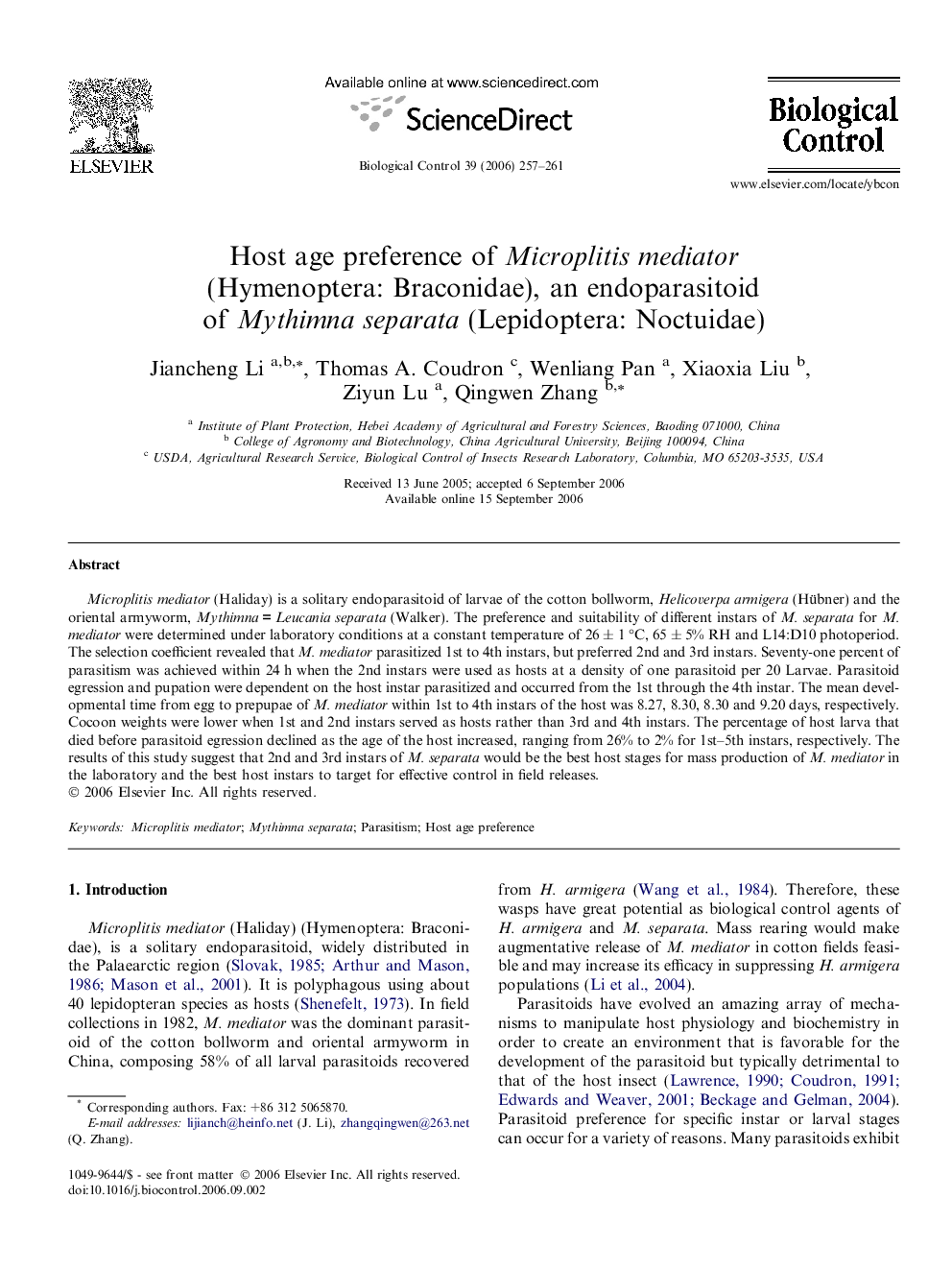| Article ID | Journal | Published Year | Pages | File Type |
|---|---|---|---|---|
| 4505372 | Biological Control | 2006 | 5 Pages |
Abstract
Microplitis mediator (Haliday) is a solitary endoparasitoid of larvae of the cotton bollworm, Helicoverpa armigera (Hübner) and the oriental armyworm, Mythimna = Leucania separata (Walker). The preference and suitability of different instars of M. separata for M. mediator were determined under laboratory conditions at a constant temperature of 26 ± 1 °C, 65 ± 5% RH and L14:D10 photoperiod. The selection coefficient revealed that M. mediator parasitized 1st to 4th instars, but preferred 2nd and 3rd instars. Seventy-one percent of parasitism was achieved within 24 h when the 2nd instars were used as hosts at a density of one parasitoid per 20 Larvae. Parasitoid egression and pupation were dependent on the host instar parasitized and occurred from the 1st through the 4th instar. The mean developmental time from egg to prepupae of M. mediator within 1st to 4th instars of the host was 8.27, 8.30, 8.30 and 9.20 days, respectively. Cocoon weights were lower when 1st and 2nd instars served as hosts rather than 3rd and 4th instars. The percentage of host larva that died before parasitoid egression declined as the age of the host increased, ranging from 26% to 2% for 1st-5th instars, respectively. The results of this study suggest that 2nd and 3rd instars of M. separata would be the best host stages for mass production of M. mediator in the laboratory and the best host instars to target for effective control in field releases.
Related Topics
Life Sciences
Agricultural and Biological Sciences
Agronomy and Crop Science
Authors
Jiancheng Li, Thomas A. Coudron, Wenliang Pan, Xiaoxia Liu, Ziyun Lu, Qingwen Zhang,
